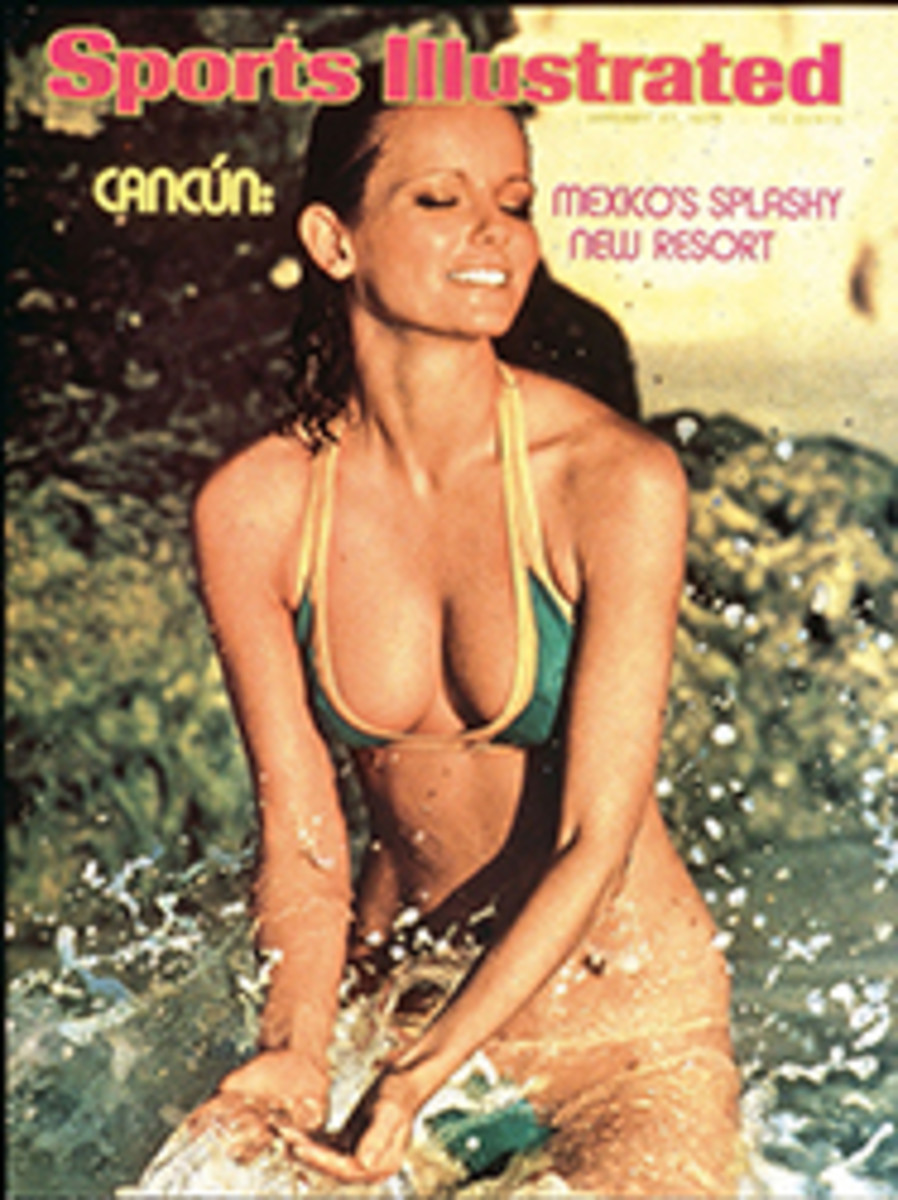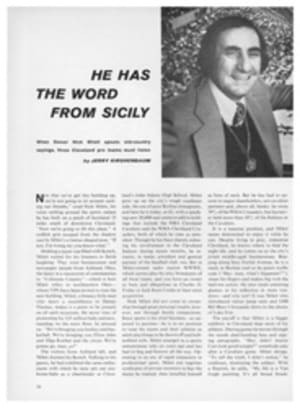
A question of survival
When Hialeah first opened its gates 50 years ago the population of Miami was only 69,754, and yet 17,000 people rattled out by car, trolley and even train to the then somewhat less than glamorous plant near the Everglades. In later years things got fancier—back-stretch help no longer spent most of their time bashing snakes with baseball bats—and today Hialeah is one of the world's most beautiful racetracks. Its 219 acres are bedecked with hundreds of Australian pines and endless patches of bougainvillea and poinsettia. Flamingos decorate ponds in the infield, and in the aviary behind the walking ring chirps and strange noises come from parrots, jabiru storks, cockatoos, peacocks, pheasants and toucans. Hialeah visitors over the years included Gilda Gray, Barbara Hutton, Gene Tunney, Winston Churchill, the Duke and Duchess of Windsor, Joe Kennedy, Harry Truman. Millions of others came to play the horses in the poshest of posh atmospheres while getting closeup views of the best thoroughbreds in America. Hialeah was not only winter racing at its best, it was racing at its best.
Last week, under the direction of Chairman of the Board John W. Galbreath and President Lynn Stone, Hialeah did a nifty job of celebrating its 50th birthday. Putting on a brave face after losing more than $3 million last season, Hialeah sold opening-day grandstand tickets at 50¢ (usual cost: $2) and treated the customers to a 10-race card, preceded by a parade of antique cars from the Vintage Automobile Club of Miami. The Budweiser team of Clydesdale horses took a turn on the main track, and there were striped blazers, straw skimmers and ukulele music. But even though the Miami area population has grown to more than two million, only 21,766 turned up for the heady nostalgia. Galbreath and Stone, noting that opening day attendance was better than that for any day during last year's meeting, claimed to be delighted and hopeful. But the next afternoon, after picking up copies of the Miami News, their smiles turned to frowns. Racing Editor Art Grace wrote, "All the king's horses and all the king's men can never put Hialeah together again." Galbreath, who with nine others had spent $21.5 million to buy Hialeah from Eugene Mori after the 1973 season, fumed, "Why would we put up money if we didn't want to continue at Hialeah? If we get support and encouragement, we'll pull through."
The financial trouble in which Hialeah finds itself is severe, but it may not be without solution. It all started when the track, which long had a monopoly on the desirable middle dates (mid-January to early March), lost them a few years ago to rival Gulfstream Park. Then the state began rotating the dates between the two tracks, an arrangement that satisfied neither. Many horsemen, accustomed to clockwork regularity of training habits and racing plans, grew tired of shifting schedules from year to year. Some began going to California, or leaving their horses at home or at one of the Carolina training centers. As a result, after last year's losing season, Hialeah's stockholders voted to sell their racing franchise to Gulfstream for $7 million while retaining the track's property for possible sale. The acreage, assessed at $13 million, has a market value of about $21 million. "It seems that Hialeah is valuable property for almost anything but a racetrack," said stockholder John W. Hanes after attendance on Saturday, the meeting's second day, fell to 17,633.
Its location, near the Miami airport, is something less than a comfortable scenic drive from downtown Miami and the hotels of Miami Beach. Although it is only 13 miles from, say, the Americana Hotel, the trip can take 45 minutes. Miami's newest racetrack, Calder, a relatively minor league venture that replaced ancient Tropical Park, is 12 miles from the Americana but the trip takes only 20 minutes. Gulfstream is even closer, and has the added advantage of being in the belt of new high-rise apartments that have risen on the coast north of Miami. Stubborn John Galbreath says, "I don't go along with the location being the reason for poor attendance. In Los Angeles they drive a long way to get to Santa Anita, and they do the same thing to get to Belmont in New York. If you have a top product to offer, they'll show up."
But Florida racing, all of it, has suffered from the competition of winter racing in the north, and it has not always had the cooperation it might have from the state. "We need tax relief," says Stone, "and we really need the middle dates on a permanent basis."
After delays and indecision postponed the sale of the track to Gulfstream, Hialeah was told by the state that it had the middle dates for 1975, and to go on with the show. "We are getting on with it," says Stone, but, he cautions, "Four years ago Hialeah handled $80 million in 40 days. If we do $70 million this year, I'd call it excellent. It would give us a chance to survive. Gulfstream did $70 million last year in the midst of a fuel crisis. If we can't match that now, with no real fuel crisis, we are in trouble."
Florida's racing gross in 1974 was around $246 million, of which state taxes and the track's share came to about 17%, or nearly $42 million. Gulfstream is now a more lucrative source of revenue than Hialeah, but in the long run it would appear that Florida racing needs the lovely old track, not just as another place to run horses but as the foundation of a healthy, well-rounded, attractive winter racing season.
The crowds this first weekend acted as though they were at a wake where, like Finnegan, the deceased might come alive again—for at least another year or so. If indeed the current season is a last rite, it will be a spirited one, with excellent racing in prospect. Three 1974 champions, Foolish Pleasure, Desert Vixen and Forego, are at Hialeah and will enliven things no end. And the guest of honor at the running of the Hibiscus Stakes last Saturday was Art Rooney, owner of the Pittsburgh Steelers, who knew hard times before his Super Bowl victory. It seemed a happy omen.

